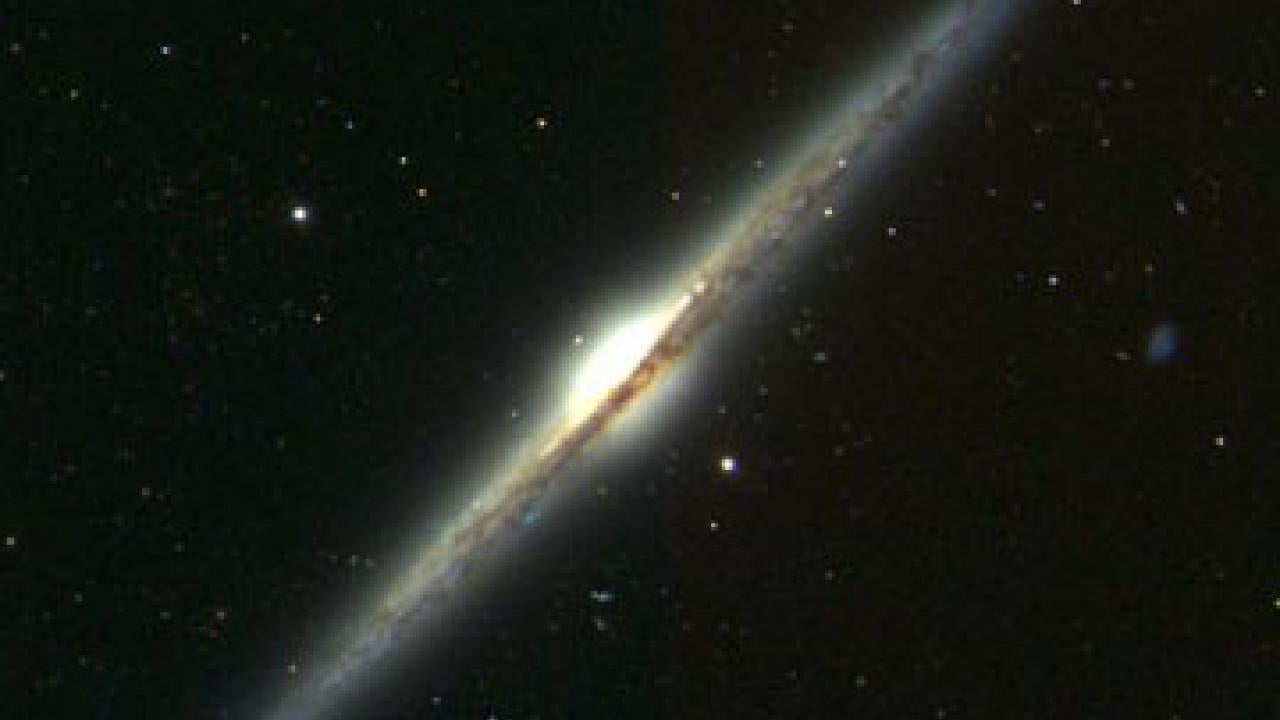The vast expanses of intergalactic space appear to be filled with a haze of tiny, smokelike “dust” particles that dim the light from distant objects and subtly change their colors, according to an SDSS-II research team that includes UC Davis astronomer Ryan Scranton.
SDSS-II is part of the Sloan Digital Sky Survey, which since 2000 has used a 2.5-meter telescope coupled with a 120-megapixel camera and two spectrographs to probe the night sky from an observatory in New Mexico. SDSS-II began in 2005 and finished observations in July 2008.
Scranton’s team reported its findings in a paper titled “Measuring the Galaxy-Mass and Galaxy-Dust Correlations Through Magnification and Reddening,” submitted to the journal Monthly Notices of the Royal Astronomical Society.
“Galaxies contain lots of dust, most of it formed in the outer regions of dying stars,” said team leader Brice Ménard of the Canadian Institute for Theoretical Astrophysics. “The surprise is that we are seeing dust hundreds of thousands of light-years outside of the galaxies, in intergalactic space.”
To discover this intergalactic dust, the team analyzed the colors of distant quasars whose light passes in the vicinity of foreground galaxies on its way to the Earth.
Dust grains block blue light more effectively than red light, Scranton explained. “We see this when the sun sets: Light rays pass through a thicker layer of the atmosphere, absorbing more and more blue light, causing the sun to appear reddened.
“We find similar reddening of quasars from intergalactic dust, and this reddening extends up to 10 times beyond the apparent edges of the galaxies themselves.”
The team analyzed the colors of about 100,000 distant quasars located behind 20 million galaxies, using images from
SDSS-II. “Putting together and analyzing this huge data set required cutting-edge ideas from computer science and statistics,” said team member Gordon Richards of Drexel University. “Averaging over so many objects allowed us to measure an effect that is much too small to see in any individual quasar.”
Supernova explosions and “winds” from massive stars drive gas out of some galaxies, Ménard explained, and this gas may carry dust with it. Alternatively, the dust may be pushed directly by starlight.
“Our findings now provide a reference point for theoretical studies,” Ménard said.
Intergalactic dust could also affect planned cosmological experiments that use supernovae to investigate the nature of “dark energy,” a mysterious cosmic component responsible for the acceleration of the expansion of the universe.
“Just like household dust, cosmic dust can be a nuisance,” said Scranton, an assistant researcher in the Department of Physics. “Our results imply that most distant supernovae are seen through a bit of haze, which may affect estimates of their distances.”
The SDSS-II research team prepared this article.
Media Resources
Dave Jones, Dateline, 530-752-6556, dljones@ucdavis.edu
